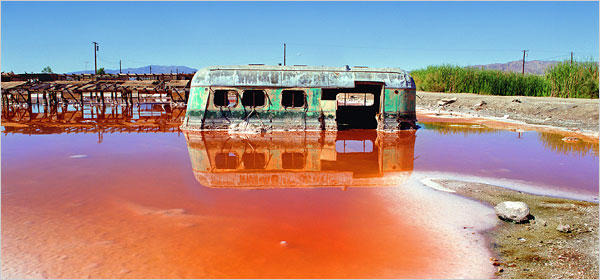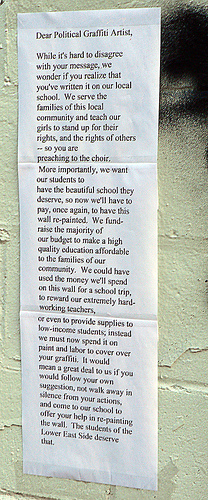I was up in Williamstown over the weekend and had a chance to visit Mass MoCA (which is always amazing, I find). I addition to the Anselm Kiefer and Jenny Holzer exhibits, which I had seen before, I was captivated by the new Badlands exhibit.

There’s something timely about the examination of post-industrial landscape — what with all of the strange spin stories the NYT has been printing lately about India and China trekking through the adolesence of their own industrial revolutions.
In the wake of our own industrial age — when it seems like we have mainly adapted to becoming consumers — it’s not clear what happens to the industrial refuse that has been accumulating: mills from the early 20th century; bomb shelters from the Cold War; factories built in the heyday of the US auto industry, etc. Is this the slow decline of our landscape into the industrial overload of Blade Runner? Or the vacant obliteration of landscape a la Mad Max?
That’s obviously a little melodramatic. But seriously. What do we do with all of this stuff? (besides re-claim it the way Mass MoCA did…)
Of Note:
- The Center for Land Use Interpretation’s collection of images entitled Water and Power — composed primarily of photos reservoirs, substations, old factories, shipping marinas and the occasional bomb shelter.
- J. Henry Fair’s aerial photographs of waste disposal sites and toxic refuse.
- Ed Ruscha’s redacted landscape photos: Country Cityscapes

Post Script: After mulling over all of that I came across Kim Stringfellow’s book Greetings from the Salton Sea in the shop downstairs. Strangely enough, even though I’m from CA, I’d never heard of the Salton Sea. The book takes a hard look at how we’ve basically created and destroyed an ecosystem in southeastern California. And painful though they are to look at, the images of a shattered landscape are stunning.
Not sure what to do with all of this, but there are some really interesting ideas in here.


